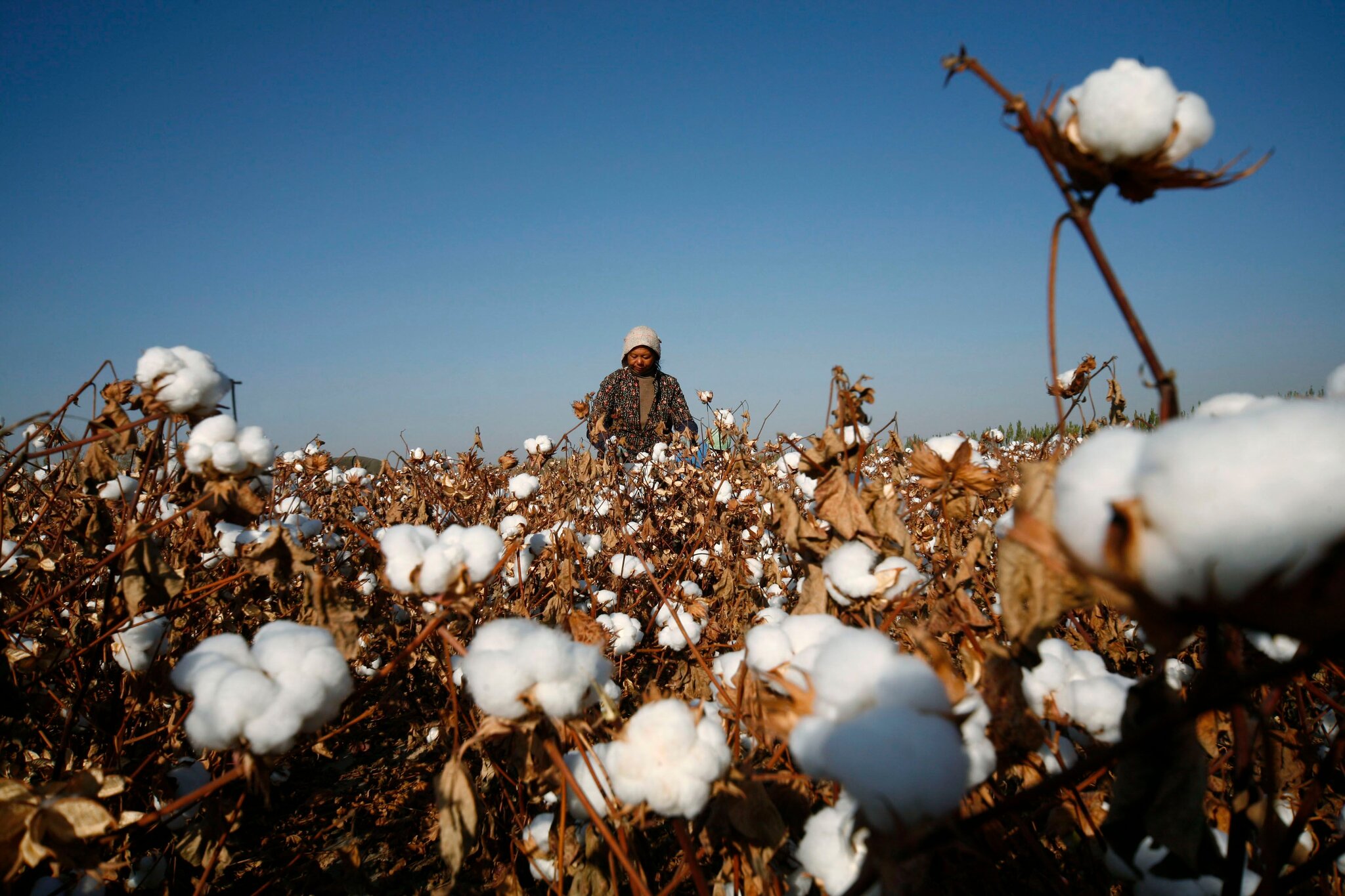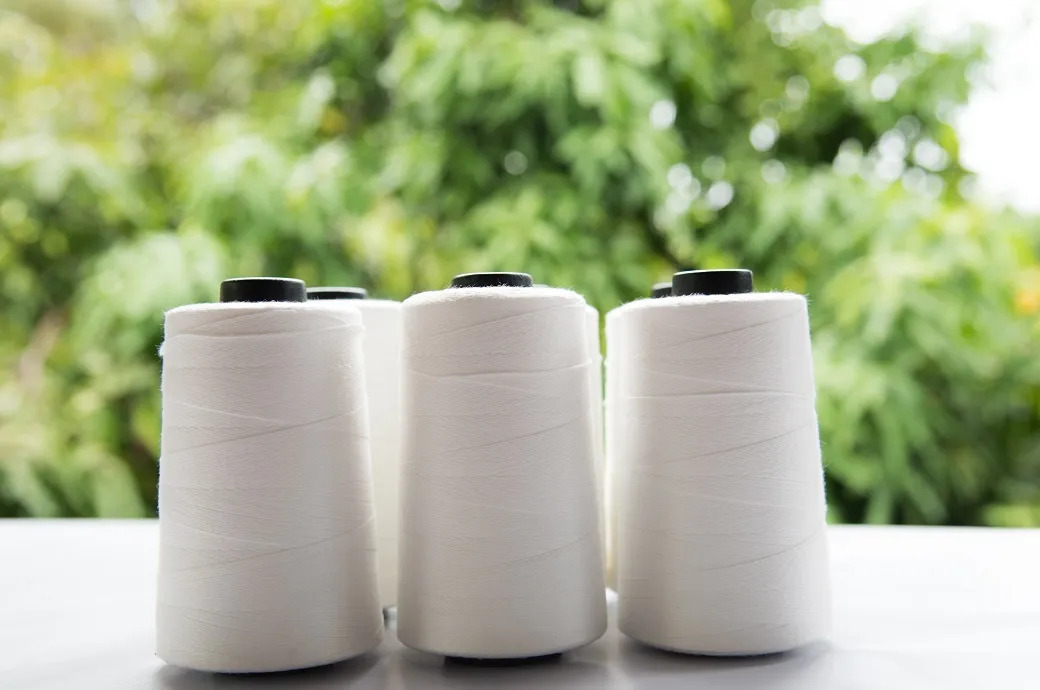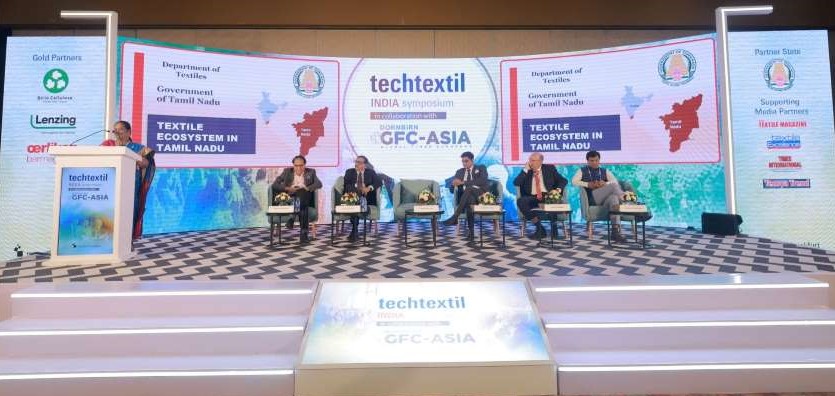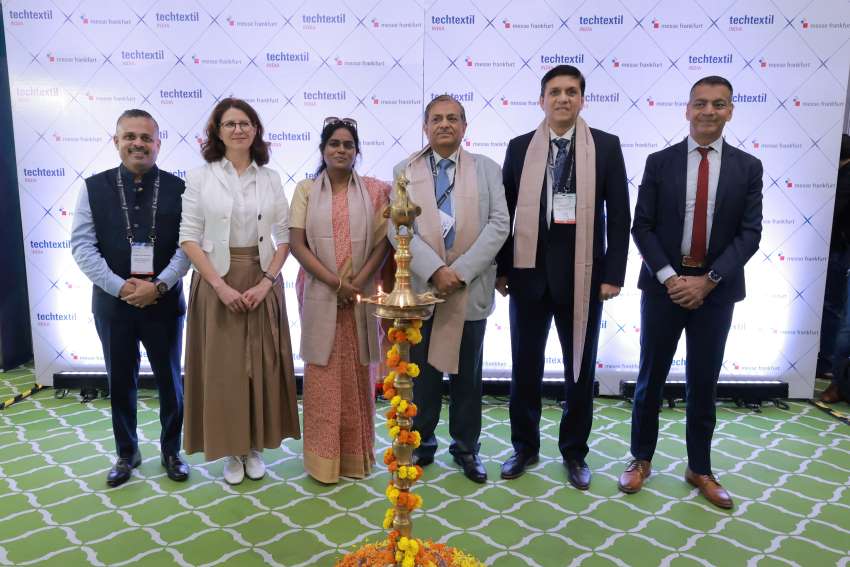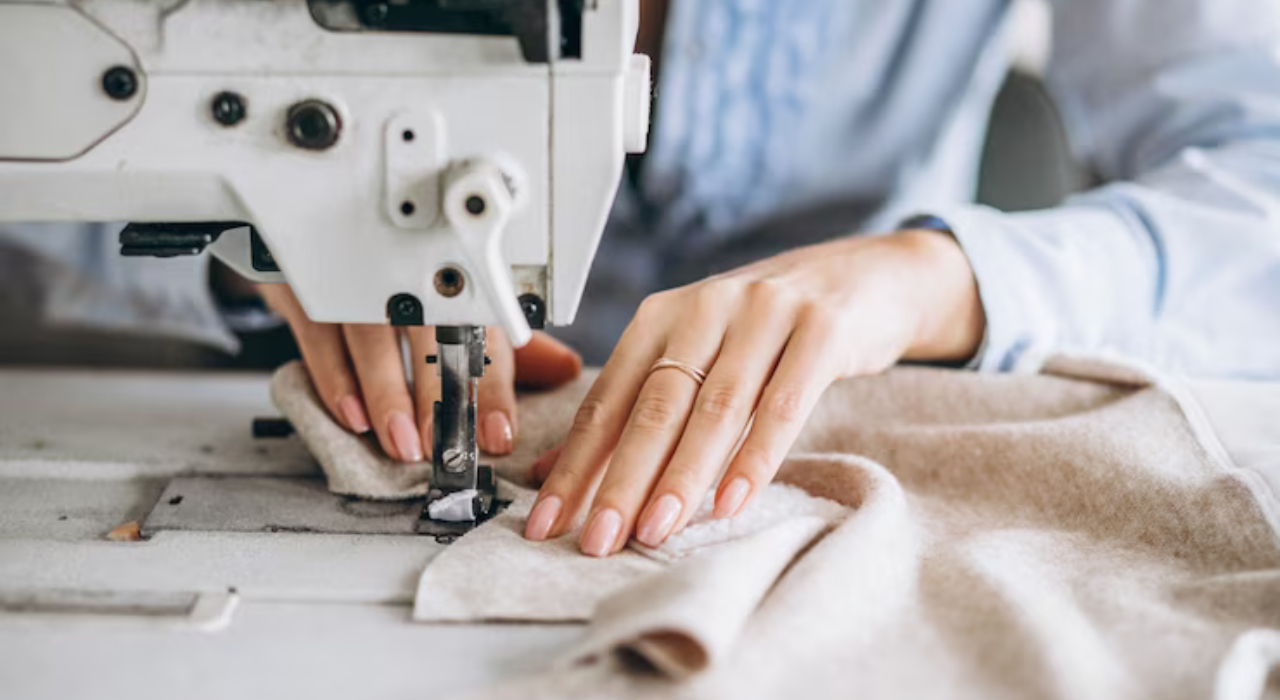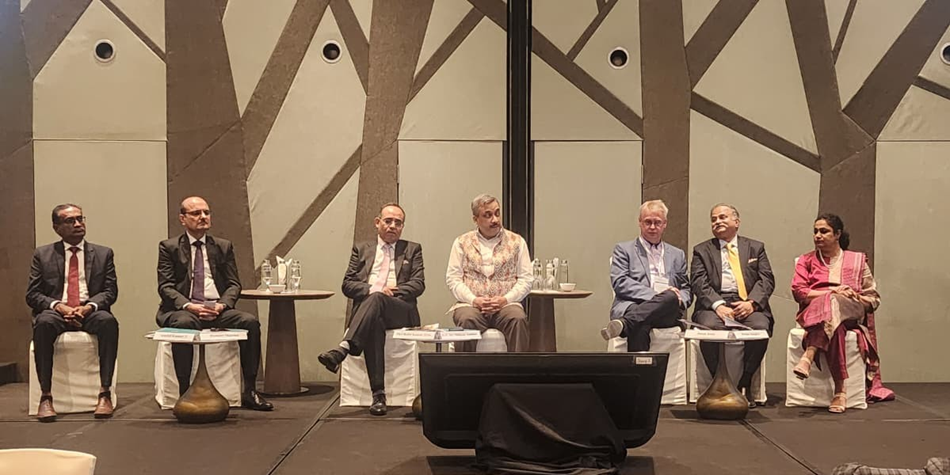FW
"With inherent advantages such as skilled workforce and competitive wages, Bangladesh has all the might to become Asia's manufacturing hub as the country is on the back of high export growth. It employs around 4.4 million workers in the garment sector, and the number is slated to grow with the rise in sectors such as leather and leather goods."
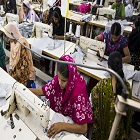
With inherent advantages such as skilled workforce and competitive wages, Bangladesh has all the might to become Asia's manufacturing hub as the country is on the back of high export growth. It employs around 4.4 million workers in the garment sector, and the number is slated to grow with the rise in sectors such as leather and leather goods.
Asia in the global market
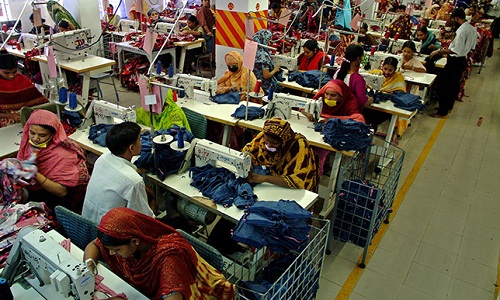
In 2015, the global garment business was worth $445 billion and Bangladesh's export was worth $26 billion. In the same year, China exported apparel items worth $175 billion, Vietnam $22 billion, India $18 billion, Turkey $15 billion, Indonesia $7 billion, Cambodia $6 billion and the US $6 billion. In 2000, the share of Asia in global clothing exports was 40.92 per cent, while that of the rest of the world was 59.08 per cent. In 2015, Asia's share was recorded at 62.41 per cent and the rest of the world was at 37.59 per cent. In fiscal 1984-85, Bangladesh's garment export was $0.12 billion and in fiscal 2015-16, the country's clothing export was $28.09 billion, he added.
Bangladesh eying global share
Bangladesh's market share in the global manufacturing sector is increasing with a rise in intra-regional trade. The key lies in giving due credit to the workers. Industry associations feel that if factory workers are treated with dignity, their productivity increases as well. The government, factory owners and retailers should work for the welfare of the workers. Imparting training not only to mid-level management, but also top level and low level management would garner better results.
What works for Bangladesh is it is in the heart of Asia and other Asian countries can shift their production to Bangladesh. There are 78.6 million people in the workforce, including all sectors like garments, agriculture, manufacturing and the services sectors. The average age of most workers is below 40, which is a dividend for the country. With higher growth of exports, Bangladesh should thrust on the environmental and security issues to go the sustainable way.
Experts feel there can be no alternative to Bangladesh owing to its capacity to handle volumes and delivering goods at competitive prices. The leather sector is the next business that is coming up in Bangladesh. The competitive advantage of Bangladesh is the duty benefit to some countries. Companies want to source compliant leather from Bangladesh. Retailers make more than 60 per cent profit, although they purchase the clothing items at very cheap rates. Going ahead, the country should also produce high-end apparel products.
With inherent advantages such as skilled workforce and competitive wages, Bangladesh has all the might to become Asia's manufacturing hub as the country is on the back of high export growth. It employs around 4.4 million workers in the garment sector, and the number is slated to grow with the rise in sectors such as leather and leather goods. </p>
<p>
<h2> Asia in the global market </h2>
<p>
In 2015, the global garment business was worth $445 billion and Bangladesh's export was worth $26 billion. In the same year, China exported apparel items worth $175 billion, Vietnam $22 billion, India $18 billion, Turkey $15 billion, Indonesia $7 billion, Cambodia $6 billion and the US $6 billion. In 2000, the share of Asia in global clothing exports was 40.92 per cent, while that of the rest of the world was 59.08 per cent. In 2015, Asia's share was recorded at 62.41 per cent and the rest of the world was at 37.59 per cent. In fiscal 1984-85, Bangladesh's garment export was $0.12 billion and in fiscal 2015-16, the country's clothing export was $28.09 billion, he added. </p>
<p>
<h2> Bangladesh eying global share </h2>
<p>
Bangladesh's market share in the global manufacturing sector is increasing with a rise in intra-regional trade. The key lies in giving due credit to the workers. Industry associations feel that if factory workers are treated with dignity, their productivity increases as well. The government, factory owners and retailers should work for the welfare of the workers. Imparting training not only to mid-level management, but also top level and low level management would garner better results. </p>
<p>
What works for Bangladesh is it is in the heart of Asia and other Asian countries can shift their production to Bangladesh. There are 78.6 million people in the workforce, including all sectors like garments, agriculture, manufacturing and the services sectors. The average age of most workers is below 40, which is a dividend for the country. With higher growth of exports, Bangladesh should thrust on the environmental and security issues to go the sustainable way. </p>
<p>
Experts feel there can be no alternative to Bangladesh owing to its capacity to handle volumes and delivering goods at competitive prices. The leather sector is the next business that is coming up in Bangladesh. The competitive advantage of Bangladesh is the duty benefit to some countries. Companies want to source compliant leather from Bangladesh. Retailers make more than 60 per cent profit, although they purchase the clothing items at very cheap rates. Going ahead, the country should also produce high-end apparel products. </p>
Industrial Fabrics Association International (IFAI) was held in the US from October 18 to 21, 2016. IFAI expo is the largest display of specialty fabrics and technical textiles in the US. Attendees were treated to four days of product demonstrations, education, networking, exhibits and awards recognizing industry achievement.
IFAI is a member-owned, member-driven trade association representing the global industrial fabrics industry. It provides events, publications, education, networking, business resources, industry advocacy and more. It works with members to provide sourcing solutions and referrals throughout the sales and production cycle. Its divisions provide market-specific activities and benefits to members.
Providing the global industry with news and information, IFAI publishes trade magazines, digital publications and industry guides to provide continued growth and awareness of the specialty fabrics, technical textiles and geo synthetic markets. The event gave exhibitors an opportunity to listen to the customer. It combines textile industry experts, manufacturers, members and attendees to deliver innovative, industry-shaping solutions. The expo covers specialty fabrics, advanced textiles or shade and weather protection.
Attendees also had the chance to earn textile testing certificates from North Carolina State University after completing a special testing course. IFAI expo 2017 will take place from September 26 to 29.
Fourth edition of FESPA Eurasia will be held in Turkey from December 8 to 11, 2016. This is a platform to reach key decision makers in the wide format screen and digital printing, textile printing and garment decoration and signage industries.
First time exhibitors to FESPA Eurasia 2016 include HP, Xerox, adhesive films manufacturer Hexis, textile equipment manufacturer Aleph, transfer printing machines manufacturer Tural Makina, digital textile printing equipment supplier Mert Dijital and textile printing machines manufacturer Özmak Makina.
A number of exhibitors have also expanded their space for the 2016 exhibition, illustrating the importance they place in FESPA Eurasia as the platform to reach key decision makers. Some exhibitors have expanded their stand size by as much as 50 per cent. Many of these have new distributor relationships and will therefore present more machines.
A host of international brands including Mimaki, HP, Fujifilm, Canon, swissQprint, Mutoh and Roland are also represented at the exhibition either directly or through local distributors. The continued commitment from both international and local exhibitors to FESPA Eurasia is a sign of confidence in the industry, and as visitor numbers have risen year-on-year, the value of the event is evident.
After the organisers of International Sourcing Expo Australia gave a broader look to it, a dedicated show focusing on footwear and leather has been included to the Sourcing Expo Australia. The International Sourcing Expo Australia, is the country’s pre-eminent platform for international sourcing in apparel, textiles and fashion accessories.
Accordingly, Footwear & Leather show, Australia will now run parallel to International Sourcing Expo Australia and the co-located China Clothing Textiles and Accessories expo to provide a significantly expanded platform for Australian trade buyers to source and locate new international suppliers. The combined events will be held at the Melbourne Convention and Exhibition Centre from November 15 to 17 and feature more than 600 exhibitors. This will include a significant contingent from Federation of Indian Export Organisations, Handloom Export Promotion Council and Council for Leather Exports. In total, Indians would be represented by more than 100 companies.
The event, which was launched in 2010 including foundation participation from India Trade Promotion Organisation, now features significant participation from across India through FIEO, HEPC and CLE. The HEPC will showcase and demonstrate Indian handloom production as well as present a seminar, while FIEO will also present a seminar on India as a major sourcing destination for textiles.
In 2016, exhibitor participation has increased substantially with many other new countries participating. This was bolstered with the participation of Enterprise Mauritius as well as Sri Lanka Export Development Board. On the whole, the event will have see the presence of India, China, Hong Kong, Taiwan, Sri Lanka, Mauritius, US, Germany, Turkey, Italy, Vietnam, Bangladesh, Pakistan, Fiji, Cambodia and Australia among others.
Scientists in Germany have developed a textile finish that provides a sensory cooling effect. Cold-inducing substances that result in sensory cooling have a mild cooling effect, even when spread over a large area, without over-cooling the skin. One example of this would be the peppermint substance menthol. This has a cooling effect and soothes itching.
Now a whole range of other chemical substances have been discovered which, like menthol, bind themselves to the cold receptors. These substances trigger a stronger cooling sensation, are odor-neutral and have a longer-lasting effect. This means they can be used for therapeutic purposes.
The textile finish is based on p-menthane derivatives (agonists) such as WS-3 (N-ethyl-p-menthane-3-carboxamide) or L-menthyl lactate and icilin. These substances have the advantage that, when spread in very low concentrations on small areas of the body, they have a lasting mild cooling effect throughout their period of activity. This kind of sensory cooling textile finish was tested on different textile substrates made from natural or synthetic fibers and blends.
During the project, researchers were able to make new findings about the substance sensitivity of specific areas of the skin (e.g. the cleavage, underarm, soles of the feet). The project also showed that sensory cooling textiles are effective in textiles worn close to the skin, but are unsuitable for loosely cut clothing that is not in direct contact with the body.
Saurer, a global leader in rotor spinning and winding machines enjoys a strong presence with its semi-automatic and fully automatic range of machines. The group consists of the spinning brands Schlafhorst and Zinser, the twisting brands Allma and Volkmann, the pre-spinning brand Jintan, the Saurer embroidery brand along with the brands Accotex, Daytex, Fiber Vision, Temco and Texparts.
With annual sales of around €1, 4,000 employees worldwide and locations in Switzerland, Germany, the UK, Czech Republic, Turkey, Brazil, Mexico, the US, China, India and Singapore, the group is well positioned to serve the world’s textile industry.
With its significant presence in spinning, Saurer has identified India as one of the most important destinations for investment and future growth. Accordingly, the company has set up a manufacturing facility in Gujarat, investing Rs 120 crores. This plant aims to strengthen Saurer’s operations in India, catering to demands in the domestic as well as export markets. It will allow the group to blend German technology with Indian experience and provide customers with the latest generation of world class products.
The plant will manufacture the Zinser models 71 and 72, both for conventional and compact ring spinning. The target for capacity is over one million spindles per year.
Pakistan president Mamnoon Hussain has called upon cotton growing countries to collectively address issues and problems related to cotton industry and strengthen global cotton economy. He said this while addressing delegates of 75th Plenary Meeting of International Cotton Advisory Committee (ICAC).The country’s minister for commerce Engineer Khurram Dastgir Khan and Sikandar Hayat Khan Bosan, minister for National Food Security and Research were present on the occasion.
Hussain said volatility of cotton prices in the international market, technological gap between developed and developing countries, pricing issues in textile industry and complex matters such as branding in the trading world were some of the challenges being faced by cotton industry and called for joint efforts to address these problems. The president said cotton industry has great significance for Pakistan as 60 per cent of country's foreign exchange depended on this sector and it was also a step for providing employment to skilled and unskilled workforce.
He said Pakistan had made unprecedented progress in areas of cotton production and industry over the past few decades and was looking forward to cooperate with the committee for growth and promotion of cotton industry for the benefit of growers and manufacturers. The president noted that during the last few decades extraordinary changes had occurred in cotton crop and related industries, adding that new varieties of cotton were introduced which has changed techniques from cotton cultivation to production. It was imperative to understand and adapt to these changes and prepare ourselves for future innovations, he emphasized.
In Nigeria, textile manufacturing is a key local industry, supported by a chain of suppliers such as cotton growers and natural dye makers. However, traditional methods of dyeing fabrics are threatened by cheap imports from abroad. Nigerians have a love of naturally dyed fabrics with many prints based on traditional motifs. In northern regions, it is common for cloth to be a single color, such as indigo. Dyers use dye-pits (two or three meters deep). The cloth is left in these for a day or two, before being rinsed and left to dry. Sometimes, indigo cloth is beaten and given an extra coating of indigo powder to give a deeper shade and a glossy shine or sheen.
Nigeria's textile industry used to be the third largest in Africa. But now the country spends about 100 billion naira annually on importing clothing materials. If half of this could be made locally, the drain of foreign exchange could be stopped. Jobs could be created. Buying home made goods can stimulate the domestic economy.
Leadership failed to sustain the manufacturing and textile industries when the country discovered oil. A return to agriculture and manufacturing could enable Nigeria come out of recession. Once industries are back, Nigeria could be not just an investment destination but also a job destination.
Grasim Industries registered a strong financial performance in the September quarter. In the last 18 months, the company has been working with value chain participants to increase the use of viscose staple fiber in garments. Being a fiber manufacturer, it has a disconnect with the garment industry. However, things are changing as Grasim is helping the textile industry launch new fashion lines using viscose staple fiber.
The company plans to invest about Rs 4,500 crores this fiscal including cement projects. It will be investing Rs 500 crores to increase caustic capacity by 2.08 lakh tons per annum to 10.48 lakh tons per annum through brownfield expansion at Gujarat and debottlenecking at other plants.
The board has agreed to distribute 25 to 45 per cent of the company’s profit as dividend per year. A broad range on dividend payout has been approved as payout to investors depend on various factors including company’s performance, cash flow, growth opportunities, capital expenditure and overall liquidity position.
The company has drawn an ambitious growth plan and expects demand for viscose staple fiber to grow. Demand for this fiber is expected to grow five per cent globally and in India it expected to register double-digit growth because of its varied application.
The 2nd edition of Gartex, India’s complete garment manufacturing solutions show would be held from July 29 to 31, 2017 at Pragati Maidan, New Delhi. First Gartex 2016 had received an overwhelming response from both exhibitors and visitors alike and succeeded in creating a useful platform for focused industry interaction and profitable business dealings.
Targeted visitors of Gartex include garment exporters, garment manufacturers, fashion designers, apparel industry professionals, home textile players, textile printing companies, sports and apparel manufacturers, buying houses among others who can directly profit from the huge industry turnout in a matter of just three days.
Hosting the industry’s most important players along with new and emerging companies, visitors are provided with immense business opportunities to explore the Indian garment textile market. Visitors can benefit from (a) face-to-face interactions with leading companies, (b) witness new product launches before they hit the market, (c) get hands-on experience of machinery and end products, (d) Find a comprehensive product showcase that meets every sourcing need and (5) Gain market knowledge through interactions on the show floor.
Gartex 2017 will cover 65,000 sq. ft. area and more than 150 companies from all across India and overseas are expected to participate. The show will incorporate Digitex- An exclusive show on digital textile printing technology. Gartex provides a platform for visitors from all over India to meet their sourcing goals from varied manufacturers, dealers, distributors and suppliers from different regions of India. The last edition saw visitors from over 140 cities find the right business opportunities at the 3-day show.

